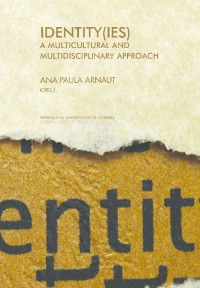Please use this identifier to cite or link to this item:
https://hdl.handle.net/10316.2/90225| DC Field | Value | Language |
|---|---|---|
| dc.contributor.author | Vihman, Virve‑Anneli | |
| dc.date.accessioned | 2017-11-10T21:53:18Z | |
| dc.date.accessioned | 2020-09-05T21:59:28Z | - |
| dc.date.available | 2017-11-10T21:53:18Z | |
| dc.date.available | 2020-09-05T21:59:28Z | - |
| dc.date.issued | 2017 | - |
| dc.identifier.isbn | 978-989-26-1482-3 | |
| dc.identifier.isbn | 978-989-26-1483-0 (PDF) | |
| dc.identifier.uri | https://hdl.handle.net/10316.2/90225 | - |
| dc.description.abstract | National identity is typically conservative, reflecting a collective understanding and carried by symbols and signs that have had time to take root. Yet, history has shown that groups can follow very different paths to emerging awareness of ethnic, national, or other group identity. Norms articulated from a central authority may reflect values embraced by the group represented, or else may impose a novel or external value system. Hence, top‑down normativity can serve to support or change group identity, but it is not necessarily conservative. This paper looks at both innovative and conservative normativity in language planning across two centuries of formation of a conscious Estonian national identity. This time period includes most of the period during which the awareness of Estonian national identity developed. Various sub‑periods within that time show how political practices with regard to language planning reflect differences in values of the periods in question. Throughout this time period, rhetoric on the part of official language planners as well as ideologues and activists has placed Estonian identity in opposition to external models, typically German or Russian national identity, and in affinity with Finnish models. In a country the size of Estonia, whose population is currently under 1.3 million, and in a context of constant foreign contacts and influences, it is no surprise that national identity is constructed in comparison and contrast to other nations. | eng |
| dc.language.iso | eng | - |
| dc.publisher | Imprensa da Universidade de Coimbra | por |
| dc.relation.ispartof | http://hdl.handle.net/10316.2/43207 | por |
| dc.rights | open access | - |
| dc.subject | National Identity | eng |
| dc.subject | Language Planning | eng |
| dc.subject | Language Reform | eng |
| dc.subject | Estonia | eng |
| dc.title | Planning and purism: ideological forces in shaping linguistic identity | por |
| dc.type | bookPart | por |
| uc.publication.firstPage | 27 | - |
| uc.publication.lastPage | 49 | - |
| uc.publication.location | Coimbra | por |
| dc.identifier.doi | 10.14195/978-989-26-1483-0_2 | - |
| uc.publication.digCollection | PB | por |
| uc.publication.orderno | 2 | - |
| uc.publication.area | Artes e Humanidades | por |
| uc.publication.bookTitle | Identity(ies) | - |
| uc.publication.manifest | https://dl.uc.pt/json/iiif/10316.2/90225/202260/manifest?manifest=/json/iiif/10316.2/90225/202260/manifest | - |
| uc.publication.thumbnail | https://dl.uc.pt/retrieve/11036543 | - |
| uc.publication.parentItemId | 56851 | - |
| uc.itemId | 68461 | - |
| item.fulltext | With Fulltext | - |
| item.grantfulltext | open | - |
| Appears in Collections: | Identity(ies) | |
Files in This Item:
| File | Description | Size | Format | |
|---|---|---|---|---|
| planning_and_purism__ideological_forces.pdf | 294.92 kB | Adobe PDF |  |
Items in DSpace are protected by copyright, with all rights reserved, unless otherwise indicated.
